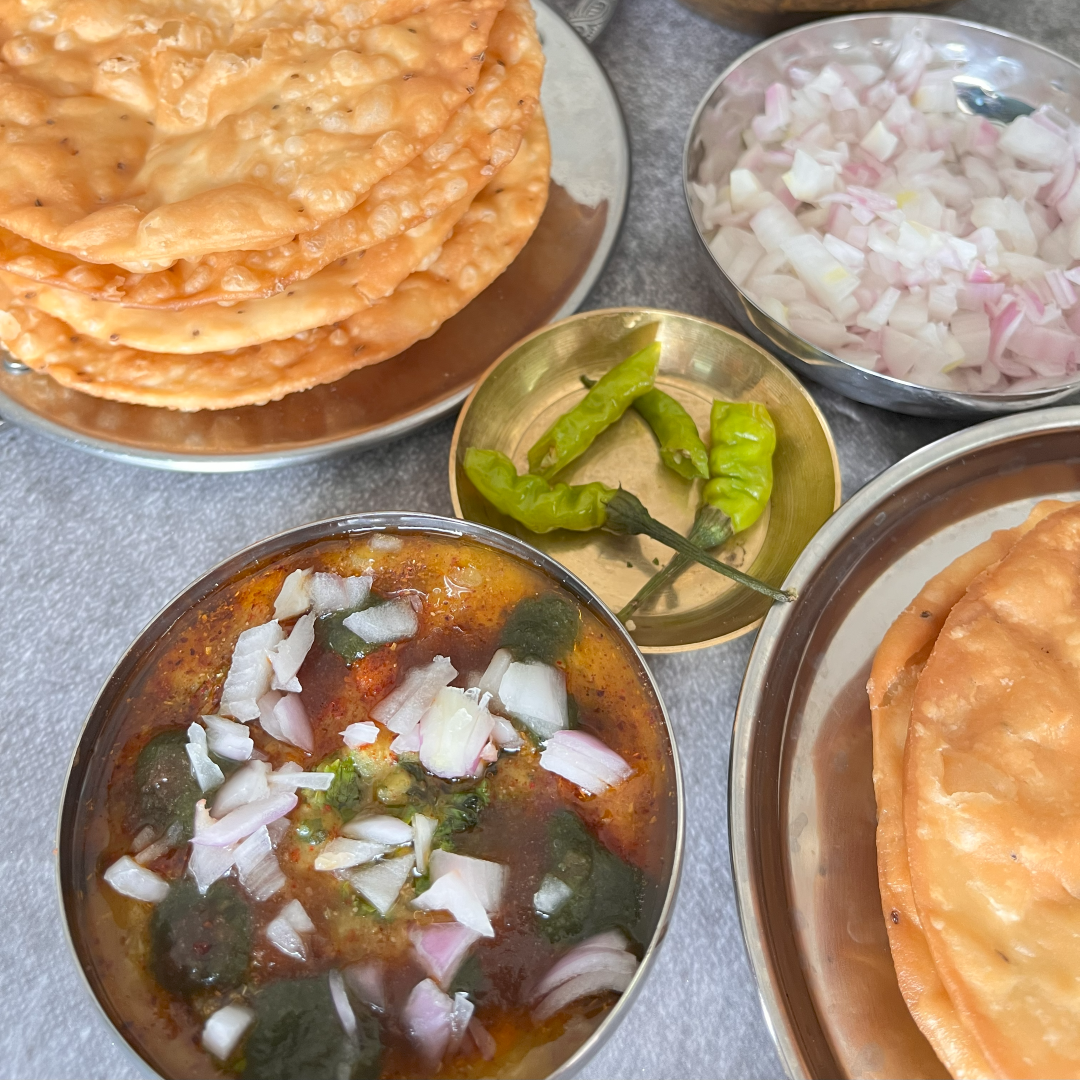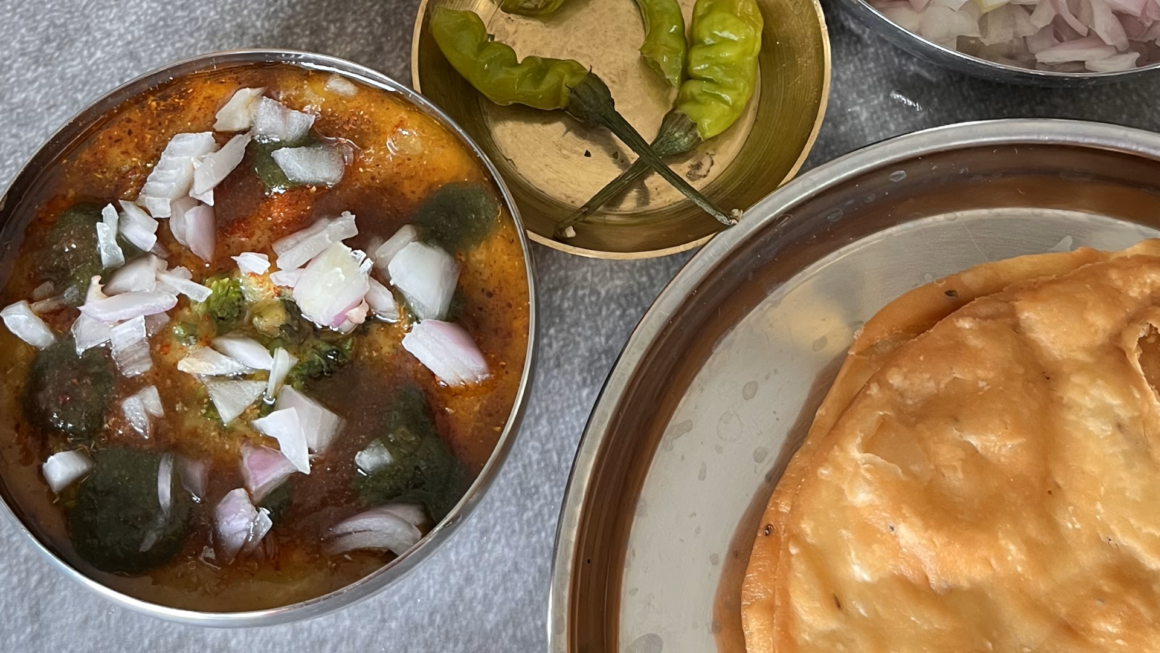A cherished Sindhi breakfast recipe, this traditional dish is loved by all. Dal Pakwan is a delectable combination of crispy fried Pakwan served with flavourful tempered dals and is best enjoyed with an array of accompaniments like green chutney, tamarind chutney, sliced onions, lemon wedges, and fried green chillies.

Sindhi Dal Pakwan
Ingredients
For Pakwan
- All-purpose flour (maida): 2 cups
- Cup oil: ¼ cup
- Carom seeds (ajwain): 2 tsp
- Salt, to taste
- Oil, for frying
For Dal
- Chana dal: 1 cup
- Yellow moong dal: ¼ cup
- Red chilli powder: 2 tsp
- 1 tsp turmeric powder
- Coriander powder: 2 tsp
- Salt, to taste
- Oil
- Fresh coriander leaves, for garnish
For Serving:
- Fried green chillies
- Sliced onions
- Lemon wedges
- Green chutney
- Tamarind chutney
Method:
- Pakwan
- In a mixing bowl, combine all-purpose flour, salt, carom seeds, and oil. Mix thoroughly.
- Gradually add water to form a dough that is neither too soft nor too firm.
- Cover the dough and let it rest for 10-15 minutes.
- Roll the dough into round discs.
- Heat oil in a deep pan and fry the Pakwan until crispy and golden brown. Remove and set aside.
- Dal
- Wash and soak the chana dal and yellow moong dal together for 2 hours.
- Cook the soaked dals in a pressure cooker until soft. Mash lightly and set aside.
- In a pan, heat oil and add cumin seeds.
- Add red chilli powder, coriander powder, and turmeric powder. Stir briefly to temper the spices.
- Add the cooked dal and mix well. Season with salt and let it simmer for 5-10 minutes.
- Garnish with freshly chopped coriander leaves.
- To Serve
- Serve the Pakwan with the prepared dal, alongside fried green chillies, sliced onions, lemon wedges, green chutney, and tamarind chutney for a complete indulgence.
Watch this recipe here – Sindhi Dal Pakwan

Rajni Isarani is an educator and homemaker who embodies the rich confluence of Rajasthani traditions and Sindhi culture. Passionate about cooking, she creates mouth-watering dishes for her loved ones, spoiling them with gourmet delicacies. Having learned secret recipes from her mother and mother-in-law, Rajni enjoys experimenting while staying true to traditional cooking. She believes in preserving and celebrating the timeless art of making food the traditional way.
Translations and detailed descriptions are provided to give a better understanding of the story to people from different cultural backgrounds across the globe.

